The first photos show a brick crosswalk on West Street where it intersects Church Circle, a street surrounding St. Anne's Church which was built in 1858.
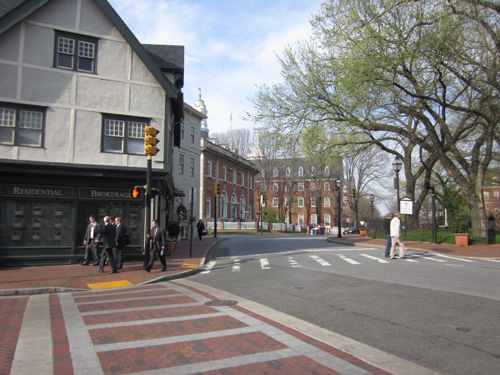
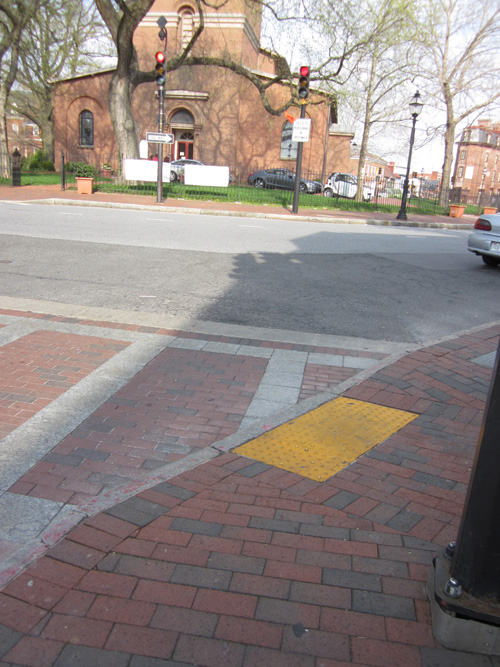
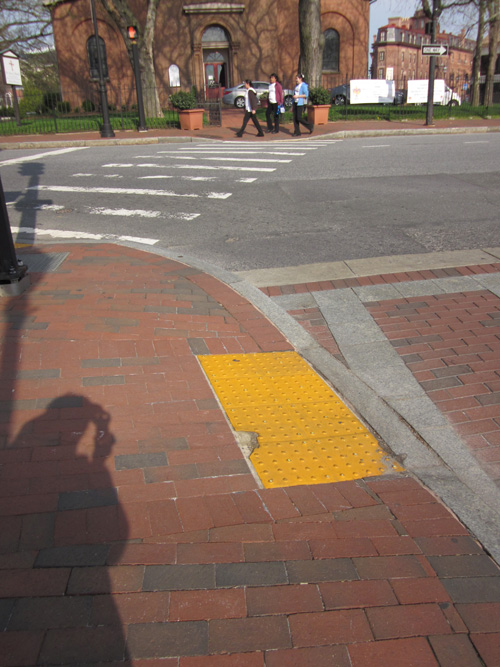
Next are photos taken just a block from Church Circle, showing the sidewalk in front of the Maryland State Capitol Building where George Washington resigned his commission to the Continental Congress in 1783 -- the room where this happened has been preserved and is being renovated to display a reenactment of the event. To the right of the stairway is a brick ramp leading up to the patio area at the top of the stairs.
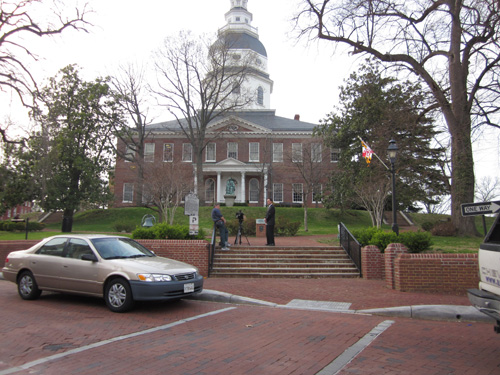
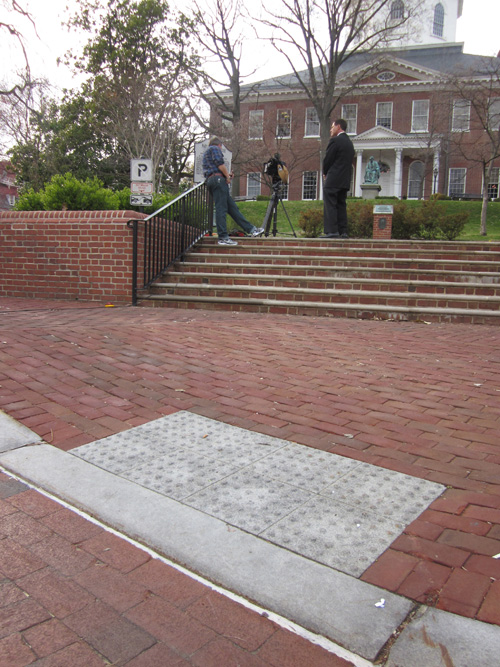
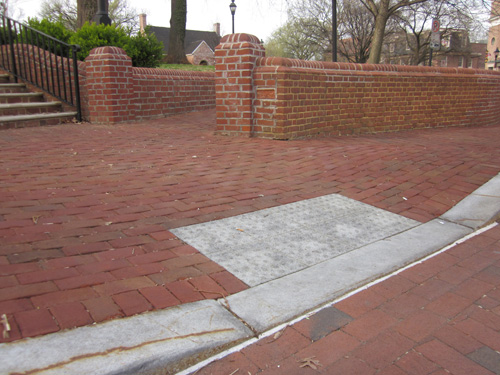
The following show examples at intersections in the historic residential area a block or two away from Church Circle. Many homes in this community are 100-150 years old.
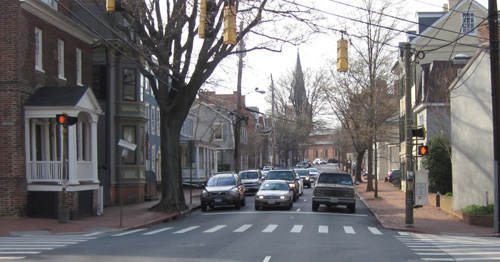
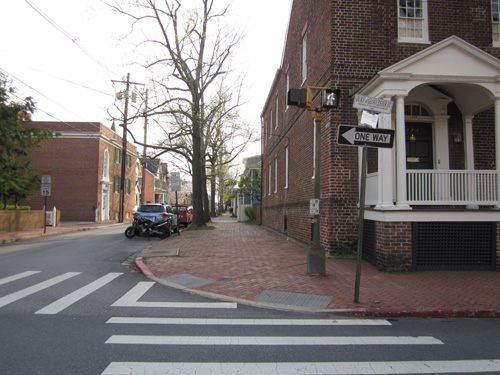
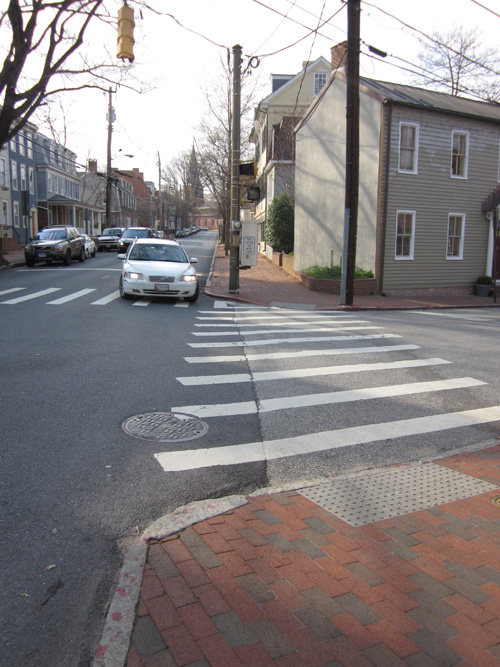
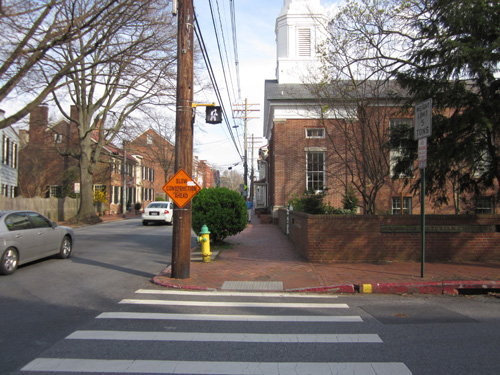


The entrance to this parking garage has examples of detectable warnings that contrast yet harmonize with surrounding brick colors. The last photo of this series shows the corner to the left of the parking garage.

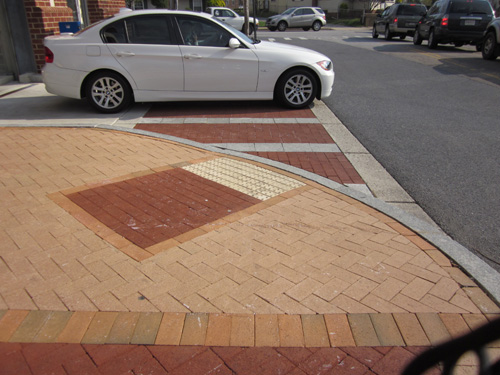
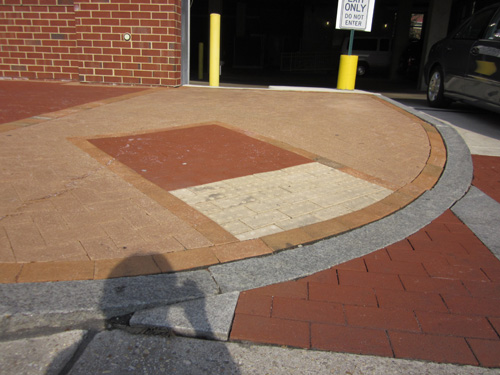

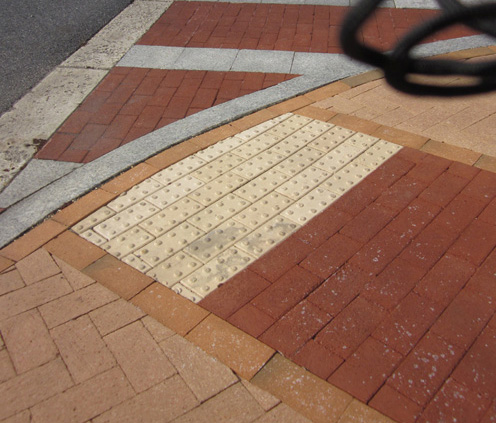
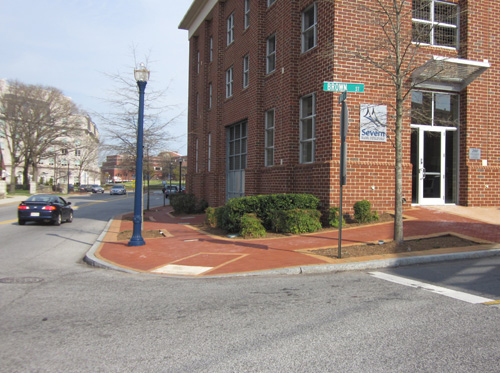

Lastly, an example of a BAD installation on Main Street, which is in the center of Annapolis. Main Street goes from Church Circle (you can see the steeple of St. Anne's Church at the top of the hill) down to the little harbor just a few blocks away.
This photo shows an intersection on Main Street which was renovated a few years ago. Initially, no detectable warning was installed. The brick of the sidewalk blended into the brick of the street and there was no abrupt change in the slope of the curbramp, making it nearly impossible for blind travelers who walked in the curbramp to recognize when they were entering the street.
Return to home page